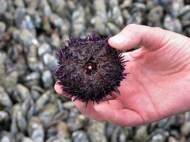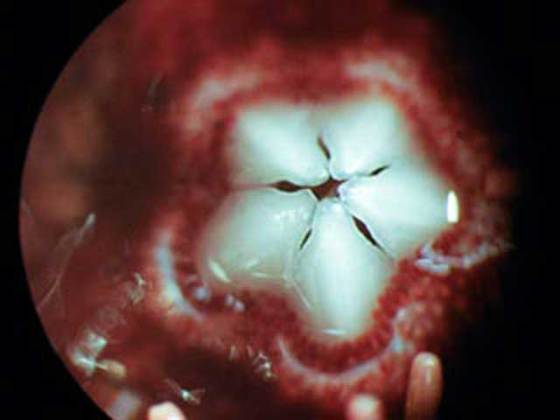Self-sharpening sea urchin teeth may inspire ever-sharped tools
 In order to survive in a tumultuous environment, sea urchins literally eat through stone. Sea urchins use their teeth to carve out nooks where they hide from predators and protect themselves from the waves. Despite constant grinding and scraping on stone, urchin teeth never get dull. This ability has puzzled scientists for decades, but researchers from the University of Wisconsin-Madison and their colleagues have managed to reveal the mystery.
In order to survive in a tumultuous environment, sea urchins literally eat through stone. Sea urchins use their teeth to carve out nooks where they hide from predators and protect themselves from the waves. Despite constant grinding and scraping on stone, urchin teeth never get dull. This ability has puzzled scientists for decades, but researchers from the University of Wisconsin-Madison and their colleagues have managed to reveal the mystery.
“The sea urchin tooth is complicated in its design. It is one of the very few structures in nature that self-sharpen”, said Pupa Gilbert, lead researcher and UW-Madison professor of physics.
The sea urchin tooth, which is always growing, is a biomineral mosaic composed of calcite crystals with two forms — plates and fibers — arranged crosswise and cemented together with super-hard calcite nanocement. Between the crystals are layers of organic materials that are not as sturdy as the calcite crystals.
“The organic layers are the weak links in the chain”, Gilbert said. “There are breaking points at predetermined locations built into the teeth. It is a concept similar to perforated paper in the sense that the material breaks at these predetermined weak spots.”
On the surface, the crystalline nature of sea urchin dentition is different from other crystals found in nature. It lacks the obvious facets characteristic of familiar crystals, but at the very deepest levels the properties of crystals are evident in the orderly arrangement of the atoms that make up the biomineral mosaic teeth of the sea urchin.
The researchers used various techniques in order to inspect the fundamental nature of the crystals. These include microscopy methods that depend on X-rays to illuminate how nanocrystals are arranged in teeth. Gilbert and her colleagues used these techniques to deduce how the crystals are organized and melded into a tough and durable biomineral.
“Now that we know how it works, the knowledge could be used to develop methods to fabricate tools that could actually sharpen themselves with use”, notes Gilbert. “The mechanism used by the urchin is the key. By shaping the object appropriately and using the same strategy the urchin employs, a tool with a self-sharpening edge could, in theory, be created.”
In addition to Gilbert, researchers from the University of California, Berkeley; Argonne National Laboratory; the Weizmann Institute of Science; and the Lawrence Berkeley National Laboratory contributed to the report published in the journal Advanced Functional Materials named: “Self-Sharpening Mechanism of the Sea Urchin Tooth”.










Thanks for the interest in this work! If anyone would like to know more about the science behind this story, we’ve set the original paper free to access until the 4th of February; you can find it here: http://www.materialsviews.com/details/news/969723/Ever-sharp_Urchin_Teeth_May_Yield_Tools_that_Never_Need_Honing.html
Adrian Miller
Advanced Functional Materials
author
The link was edited in order to function (there was no space before it).
Glad the research paper became public, at least for a while.
Thanks for fixing it – I hope the paper is useful!